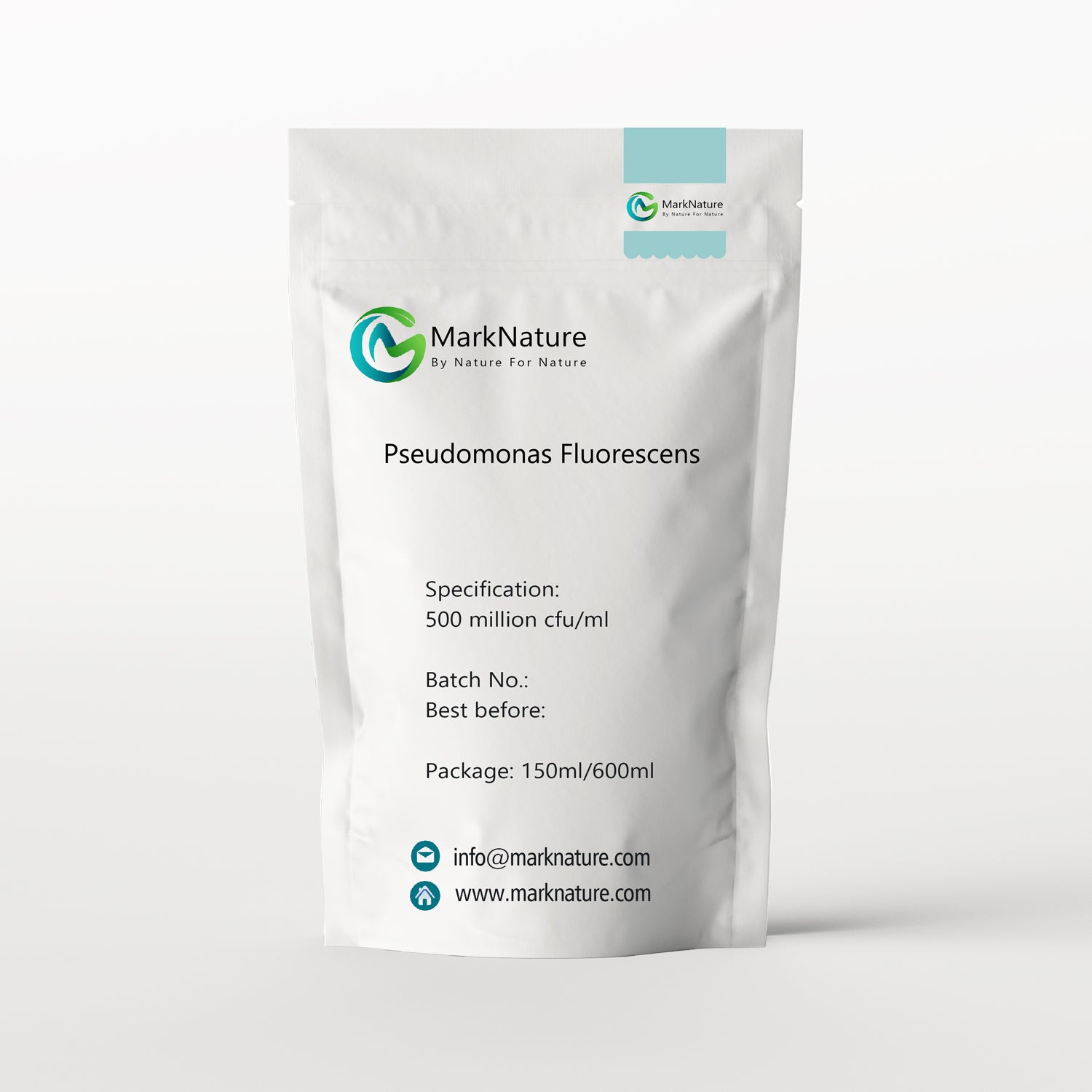Description
MarkNature presents Pseudomonas Fluorescens, a potent biofertilizer designed for dual functionality in enhancing plant growth while addressing heavy metal pollution in soils. This Gram-negative, rod-shaped bacterium, a member of the Pseudomonas genus, serves as a multifunctional bioagent, harnessing its natural properties to optimize plant health and soil quality. With a concentration of 500 million CFU/ml, this biofertilizer offers a robust solution for agricultural and environmental applications.
Specification:
Pseudomonas Fluorescens: 500 million CFU/ml. Min.
Key Features:
Applications:
MarkNature's Pseudomonas Fluorescens stands as a pivotal biofertilizer, revolutionizing agricultural and environmental practices. Applied at the root zone, it forms a symbiotic relationship with plants, enhancing nutrient uptake and bolstering growth. Simultaneously, it tackles heavy metal pollution in soils, detoxifying the environment. Its bioremediation prowess extends to eliminating styrene, polycyclic aromatic hydrocarbons, while its protective qualities shield plants from microbial infections. This biofertilizer not only contributes to sustainable agriculture but also presents a promising eco-friendly alternative in pest control, showcasing its versatility and wide-ranging benefits across diverse applications.
Recommended Usages:
Crops: Corn, rice
Vegetables: cucumber, tomato, cabbage, potato, ginger, scallion, garlic, etc.
Fruits: strawberry, watermelon, grape, apple, etc.
Usages:
1) Fertigation: 4.5~15 L/ha./each time, 7~10 days/every time, total 10~20 times in growth period.
2) Root Irrigation:37.5L/ha./each time
3) Punching: 75L~150L/ha/each time
Specification:
Pseudomonas Fluorescens: 500 million CFU/ml. Min.
Key Features:
- Biostimulation and Bioremediation: Pseudomonas Fluorescens acts as a biostimulant, fostering plant growth, while simultaneously remedying heavy metal pollutants in soils.
- Toxin Elimination: Its ability to break down toxins and pollutants, such as styrene and polycyclic aromatic hydrocarbons, ensures a cleaner environment for plant development.
- Pathogen Protection: Produces secondary metabolites like antibiotics and hydrogen cyanide, safeguarding plants against infections caused by bacteria and fungi.
- Competitive Exclusion: Rapid colonization aids in outcompeting pathogens, bolstering plant defense mechanisms.
- Environmentally Friendly Pest Control: Potential as an alternative to synthetic pesticides, exhibiting toxicity to vector mosquitoes' larvae and pupae, reducing agricultural concerns.
- Swift proliferation in soil, ensuring robust colonization of beneficial bacteria.
- Mitigates and alleviates plant/crop diseases effectively.
- Stimulates the production of growth agents, fostering enhanced root development.
- Enhances soil fertility, leading to improved and heightened fertility levels.
Applications:
MarkNature's Pseudomonas Fluorescens stands as a pivotal biofertilizer, revolutionizing agricultural and environmental practices. Applied at the root zone, it forms a symbiotic relationship with plants, enhancing nutrient uptake and bolstering growth. Simultaneously, it tackles heavy metal pollution in soils, detoxifying the environment. Its bioremediation prowess extends to eliminating styrene, polycyclic aromatic hydrocarbons, while its protective qualities shield plants from microbial infections. This biofertilizer not only contributes to sustainable agriculture but also presents a promising eco-friendly alternative in pest control, showcasing its versatility and wide-ranging benefits across diverse applications.
Recommended Usages:
Crops: Corn, rice
Vegetables: cucumber, tomato, cabbage, potato, ginger, scallion, garlic, etc.
Fruits: strawberry, watermelon, grape, apple, etc.
Usages:
1) Fertigation: 4.5~15 L/ha./each time, 7~10 days/every time, total 10~20 times in growth period.
2) Root Irrigation:37.5L/ha./each time
3) Punching: 75L~150L/ha/each time

